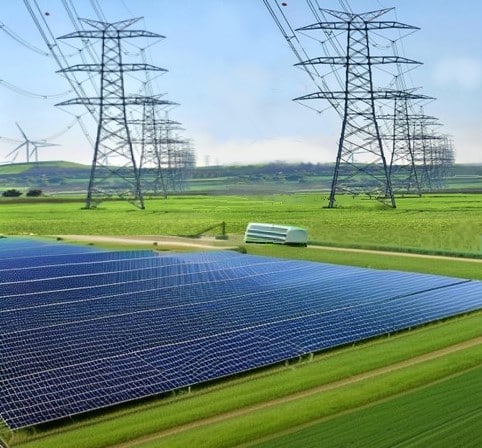Harnessing Rooftop Solar Energy: A Sustainable Solution to the UK’s Energy Needs
Published 21st November 2024
In my third commentary on the General Election, I criticised Energy Secretary Ed Miliband for overruling the Planning Inspectorate and numerous regional government officials who opposed the Sunnica site proposal. This massive 7-square-mile development near Newmarket Racecourse threatens to severely harm the horseracing industry and eliminate valuable irrigated farmland used for vegetable cultivation. In this piece, I propose a greener, more practical solution to meeting the UK’s energy needs—one that benefits the majority of the population while preserving our critical industries and agricultural resources.
The UK faces a growing energy challenge, balancing the need for sustainability with increasing demand. Traditional energy sources are being phased out in favour of renewable alternatives. However, the current approach often prioritises large-scale solar farms, which consume valuable farmland, over decentralised energy solutions.
A more effective and equitable strategy would involve energy companies installing solar panels on residential rooftops, paired with battery storage systems. This approach could transform the UK’s energy landscape, reduce environmental impacts, and empower homeowners with lower energy bills.
Anthony Royd

The Rooftop Solar Opportunity
The UK’s housing stock represents an untapped resource for energy generation. Millions of rooftops, currently unused, could host solar panels capable of generating substantial electricity. With advancements in solar technology, even homes in less sunny regions of the UK can contribute meaningfully to the grid.
Installing solar panels on homes would create a decentralised energy network. Each home would act as a mini power plant, generating electricity throughout the day.
By equipping homes with storage batteries, this energy could be stored for use during peak hours, when demand on the grid—and electricity prices—are highest. This would not only stabilise the grid but also lower costs for homeowners, who could rely on stored solar energy rather than purchasing it during expensive peak times.
The Benefits of a Decentralised Energy Network
Reducing Pressure on Farmland
Large solar farms, while effective, come at a significant cost: they occupy vast swathes of farmland, reducing the land available for agriculture and potentially impacting food security.
By shifting focus to rooftop solar installations, the UK could meet its renewable energy goals without sacrificing valuable farmland.
This strategy would align energy production with urban and suburban areas, where demand is highest, reducing the need for costly energy transmission infrastructure.

Economic Benefits for Homeowners
Moreover, a widespread adoption of rooftop solar could create jobs in the installation, maintenance, and manufacturing sectors, further stimulating the economy. Energy firms would gain access to a decentralised energy network that reduces strain on traditional power plants while enabling them to profit from selling surplus energy.
Environmental and Grid Stability Benefits
Rooftop solar installations would significantly reduce the UK’s reliance on fossil fuels. By producing clean energy locally, the carbon footprint of energy production and transmission would shrink. Additionally, decentralised energy generation and storage would enhance grid stability. Homes with battery storage could act as a buffer during periods of high demand or energy shortages, reducing the risk of blackouts.
Excess energy generated by these systems would flow back to the grid, providing additional renewable energy for wider use. This would also encourage a shift to a smarter grid system, capable of efficiently managing energy flows between producers and consumers.
Challenges and Solutions
Upfront installation costs remain a significant barrier for many households, and retrofitting older homes can be complex. However, energy firms could finance installations, offsetting these expenses against the costs of purchasing land, navigating planning permissions, and addressing delays caused by local consultations and objections.
Additionally, the creation of energy farms in the countryside incurs significant expenses for connecting them to the National Grid, often requiring unsightly rows of electricity pylons that further disrupt local landscapes. Collaboration between energy firms and the government would also be essential to develop financing models, such as tax incentives for energy companies, to make this initiative accessible to all.
The current regulatory frameworks must evolve to support decentralised energy systems. This includes updating building codes, grid connection policies, and tariff structures to incentivise rooftop solar adoption. Public awareness campaigns could also play a crucial role in educating homeowners about the benefits of participating in such programs.
Conclusion: Adopting the Rooftop Solar Opportunity
Equipping residential rooftops with solar panels and battery storage systems presents a practical, sustainable, and equitable approach to addressing the UK’s energy challenges. By utilising existing infrastructure—homes—this strategy enables significant renewable energy generation without compromising farmland. It also offers a cost-effective and rapidly deployable solution to bolster the nation’s transition to clean energy.
This approach not only addresses environmental concerns but also empowers homeowners with lower bills and contributes to a more stable energy grid. With the right policies and partnerships, the UK could pave the way for a cleaner, more resilient energy future, or Is It Me?
